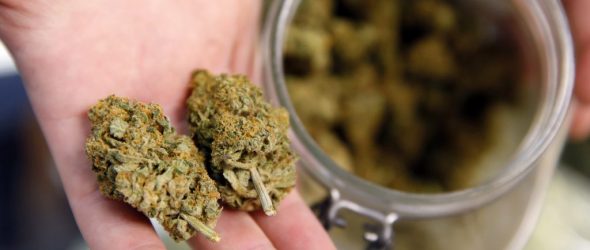
Glenwood Springs’ Planning and Zoning Commission discussed instituting a cap equal to one store per 1,000 residents at its continued discussion of marijuana regulations Tuesday night at a special meeting.
During 45 minutes of discussion, the focus was on a cap either of a set number or based on population and increasing buffers to 1,000 feet.
Current regulations dictate a 500-foot buffer around kindergarten through 12th-grade schools and 900 feet around existing pot shops.
There are currently seven pot shops operating and two more permitted but not operating. Senior planner Trent Hyatt said there also are two pending applications, including one on the east side of Glenwood Meadows.
City staff has determined that with existing buffers, Glenwood could approve 10 more pot shops for a total of 19.
At the previous work session, the commission expressed general consensus that 19 pot shops would be too many for Glenwood, and wanted to see how increasing buffers around schools and adding buffers around substance treatment facilities and parks would limit the number of allowable pot shops.
At Tuesday’s special meeting, Hyatt presented two maps, one with a 500-foot buffer around schools, parks and mental health and drug treatment facilities and 900 feet around existing retail marijuana shops; and another with 1,000 feet around all uses.
The meeting focused only on the 1,000-foot buffer map.
“I’m not sure increasing the buffers got you where you want to be,” Hyatt said.
The exact number of pot shops allowed with the 1,000-foot buffer was open to some interpretation, but Hyatt said that it would be 11 total, bearing in mind that one pending application is within 1,000 feet of Glenwood Springs Middle School but must be evaluated using the current criteria.
He also pointed out that if the airport were redeveloped, there would space there outside of the buffers for a shop.
Commission chair Marco Dehm came up with the idea of limiting shops to one person per 1,000 residents, but he also recommended using the buffers to avoid over concentration of pot shops, especially downtown.
Commissioners Ingrid Wussow and George Shaver both asked how population would be determined in non-Census years.
Hyatt said, “I’ve been very impressed with the state demographer.” The office looks at factors such as household size, new units built and deaths, he said.
Commissioner Sumner Schachter said, “I’m in favor of 10 to 12 shops based on our population.”
Commissioner Carolyn Cipperly was in favor of the 1,000-foot buffers but opposed to the cap based on population. She said that considering pot tourism is “the thing,” and New Castle has no pot shops, Glenwood is serving more than its population of roughly 10,000.
The next step will be reviewing a staff recommendation based on 1,000-foot buffers and a cap based on population and taking public comment.
“Staff is going to put together their best recommendation for a cap based on the population and also increasing distance requirements, and we’ll bring that back to the commission at some point at a regular meeting, so the public will be allowed the opportunity to weigh in,” Assistant Economic/Community Development Director Gretchen Ricehill said in a follow-up interview.
She did not know when the recommendation would come before the commission.


